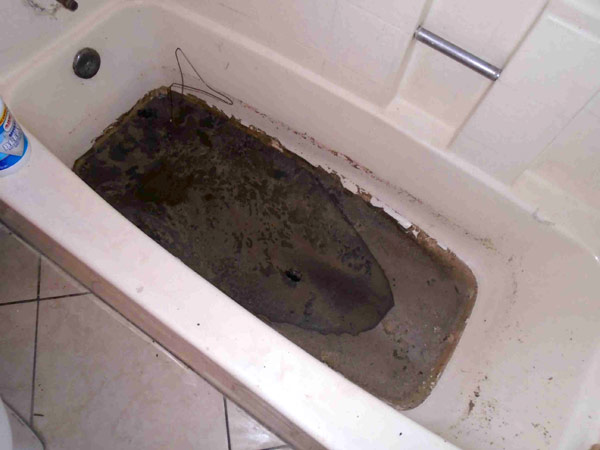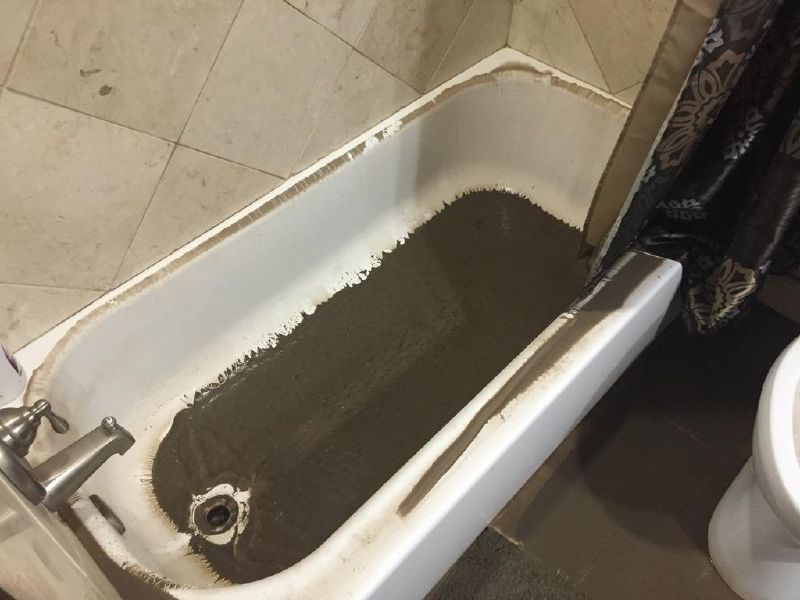How do you actually feel when it comes to What To Do If Sewage Starts Backing Up Into the Shower?

Sewer back-up in the tub can be a stressful and unsanitary issue for any kind of property owner. Not only is it inconvenient, yet it additionally positions significant health risks and shows underlying issues with the plumbing system. Recognizing why sewer is showing up through the bathtub is essential for taking proper activity to resolve the trouble efficiently.
Intro to the Concern
Usual Reasons for Sewer Back-up
Clogs in the Sewage System Line
One of one of the most common reasons for sewage backup is a clog in the drain line. This can occur because of the buildup of particles, oil, or international items in the pipelines, preventing proper flow and creating sewer to back up into your tub.
Tree Origin Intrusion
Tree roots seeking wetness and nutrients can infiltrate sewer lines via tiny cracks or joints. With time, these origins can expand and increase, causing considerable damages to the pipelines and leading to sewage backup issues.
Understanding the Trouble
When sewer draws back up into the bathtub, it's a clear sign of a problem with the drainage system. The wastewater that should be flowing far from your home is rather discovering its back right into your space, which can lead to significant damages and health hazards.
Prospective Causes
Several aspects can add to sewage back-up in the bath tub. From obstructions in the sewage system line to issues with the plumbing infrastructure, identifying the origin is necessary for finding a remedy.
Aging Infrastructure
Older homes might have dated plumbing systems that are a lot more vulnerable to deterioration, cracks, and damage. As pipelines age, they become more vulnerable to leaks and clogs, increasing the chance of sewer backup events.
Heavy Rainfall or Flooding
During periods of heavy rainfall or flooding, the sewer system may become overloaded with excess water, causing back-ups and overflows. This can result in sewer backing up into tubs and various other fixtures inside the home.
Indications of Sewer Back-up
Foul Odors
Undesirable smells rising from drains or components, especially in the shower room, might show sewage back-up concerns. These smells are often solid and persistent, indicating an issue that requires prompt focus.
Slow Draining Fixtures
Bathtubs, sinks, and toilets that drain pipes slowly or otherwise in any way could be experiencing sewer backup. If multiple components are affected simultaneously, it's likely that the problem originates from a typical factor, such as the main sewer line.
Gurgling Sounds
Weird gurgling or bubbling sounds coming from drains when water is running somewhere else in your house are a sign of air entraped in the plumbing system. This air accumulation can result from sewage back-up and should be explored quickly.
Health And Wellness Threats Related To Sewer Backup
Contamination of Water Supply
Sewage backup can contaminate the water system in your house, posing a significant wellness risk to you and your household. Direct exposure to infected water can result in intestinal issues, skin infections, and other health problems.
Mold and mildew Growth
Moisture from sewer backup can create perfect conditions for mold and mildew growth in your house. Mold and mildew spores can aggravate respiratory system issues and create allergic reactions in delicate individuals, making prompt cleanup important.
Spread of Illness
Sewage includes unsafe microorganisms, infections, and bloodsuckers that can cause a variety of illness, including hepatitis, cholera, and gastroenteritis. Entering contact with sewage or infected surface areas places you in jeopardy of infection.
Tidying up After Sewage Back-up
Disinfection Procedures
Extensively decontaminate and disinfect affected locations after sewer back-up to remove hazardous germs and protect against mold and mildew development. Use suitable cleansing products and safety equipment to make sure safe and reliable cleaning.
Repair of Impacted Areas
Repair any damages to flooring, walls, or components brought on by sewer back-up. Depending upon the level of the damages, you might need to change carpeting, drywall, or other products to recover your home to its pre-loss condition.
Immediate Actions to Take
Turning Off Water
In case of sewage backup, it's necessary to shut off the water to prevent additional contamination and damages. Find the main water shutoff valve in your house and closed it off up until the issue can be solved.
Calling an Expert Plumber
Handling sewage back-up is not a do it yourself work. Call an accredited plumber with experience in handling sewage-related issues to examine the situation and perform necessary fixings or cleanups.
Staying Clear Of Contact with Infected Water
Until the sewage back-up is dealt with, stay clear of contact with contaminated water to avoid the spread of microorganisms and virus. Put on protective gear if you have to be in the afflicted location and wash your hands completely afterward.
Safety nets
Routine Maintenance of Sewer Lines
Schedule normal evaluations and upkeep of your sewage system lines to identify and address potential problems prior to they rise into significant issues. This can include clearing out debris, checking for tree root invasion, and fixing any kind of damaged pipes.
Installing Backwater Valves
Think about installing backwater valves in your plumbing system to avoid sewage from receding right into your home during durations of heavy rainfall or flooding. These valves immediately close when water draws back up, safeguarding your residential property from contamination.
Appropriate Disposal of Family Waste
Stay clear of flushing anything apart from bathroom tissue and human waste down the toilet to prevent blockages and blockages in the sewage system line. Dispose of grease, oil, and various other house chemicals correctly to reduce the risk of plumbing troubles.
Why Is Water Backing Up in My Bathtub When I Flush My Toilet?
What to do about a sewer line clog
First, don’t bother with plunging. No amount of plunging will dislodge the clog in a sewer line. The clog is too far away. Plungers are for clogs in the toilet itself, not the sewer line. Plus, the most likely causes of a sewer clog are:
Tree roots Flushed toys or feminine products Grease buildup Those items don’t move easily. And in the case of tree roots, the roots need to be cut out of the pipe and the pipe will need to be repaired.
You’ll need a closet auger. A closet auger is a type of plumber’s snake with a protective cover to keep from scratching the delicate porcelain toilet. If the clog is further down, you may need to remove the toilet or use one of your cleanouts to get to the clog.
We also recommend doing a video inspection of the drain to ensure that the cause of the clog has been completely removed. Otherwise, you could have the same problem again in a few days or weeks.
https://mspplumbingheatingair.com/blog/why-is-water-backing-up-in-my-bathtub-when-i-flush-my-toilet

Do you appreciate reading about Why is Sewage Backing Up Into My Bathtub?? Put a review directly below. We will be delighted to know your thinking about this write up. We are looking forward to see you back again in the future. In case you appreciated our page please make sure you remember to pass it around. I take joy in your readership.
Call Today